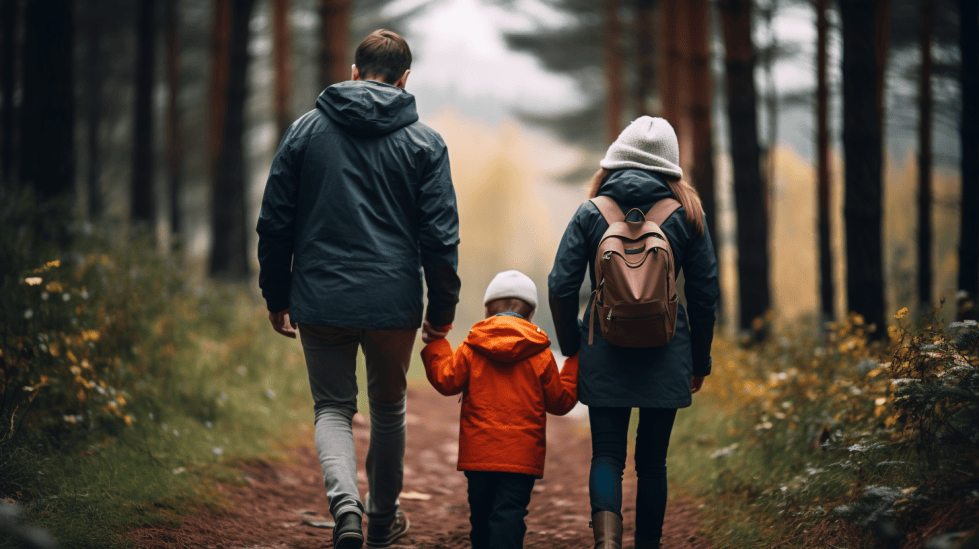Family Survival Planning
In today’s world, we never know when an emergency or disaster might strike. It can be overwhelming to think about all the possible scenarios, but one thing is certain: being prepared will always provide some peace of mind. Family survival planning is an essential part of ensuring that our loved ones are safe and secure during challenging times. From creating an emergency plan to stocking up on essential supplies, there are numerous steps we can take to make sure our families are ready for whatever the future holds.
One of the primary aspects of family survival planning is understanding the importance of food and water storage. Having a sufficient supply of non-perishable foods and potable water can make a substantial difference in the outcome of any calamity. Another critical element is the development of essential skills and knowledge. This includes first aid, navigation, and other practical capabilities that could come in handy during a crisis scenario.
Key Takeaways
- Family survival planning helps ensure the safety and security of loved ones during emergencies.
- Adequate food and water storage is a crucial aspect of being well-prepared.
- Developing essential skills and knowledge, such as first aid and navigation, can significantly improve outcomes in challenging situations.
Understanding Family Survival Planning
As someone who values the safety and well-being of my loved ones, I find it crucial to understand and implement family survival planning. This type of planning is all about preparing for various risks and unforeseen events that could potentially impact our lives, be it natural disasters, financial crises, or civil unrest.
The first step in family survival planning is to assess the potential risks that could affect us. By considering the geographical location, climate, political environment, and other factors, we can identify the most likely threats and focus our preparations accordingly. For instance, if I live in a flood-prone area, it would be wise for me to prioritize flood mitigation measures in my planning.
Another critical aspect of survival planning is having a solid contingency plan in place. This entails discussing and outlining specific steps that each family member should take during an emergency. It might include designated meeting points, communication plans, and essential supplies each family member should have at their disposal. It’s crucial that we all understand our roles and responsibilities, and practice executing the plan through drills and simulations.
Furthermore, family survival planning also involves equipping ourselves with vital skills and knowledge that can prove invaluable during times of crisis. For example, knowing how to purify water, perform basic first aid, and prioritize what to do in life-threatening situations can greatly enhance our chances of survival and increase the resiliency of our response.
As someone committed to the well-being of my family, I firmly believe that taking the time to plan and prepare for potential emergencies will put us in a better position to cope with any difficult situations that may arise. By investing in family survival planning, I can feel more confident, knowledgeable, and capable of facing the challenges that life may throw at us, while ensuring the safety of the people closest to me.
Creating a Family Emergency Plan
I believe that having a family emergency plan is essential for ensuring the safety and well-being of our loved ones during unexpected situations. As a starting point, I’ve gathered some key aspects to consider when creating a family emergency plan.
It’s important to include all family members in the planning process, especially children, to ensure everyone knows what to do in an emergency. Also, don’t forget to include provisions for pets in the plan, as they are an essential part of our families too.
The first thing I focused on is a communication plan. This involves choosing an out-of-state contact person who all family members can reach and inform about their status during an emergency. Additionally, it’s crucial to establish a meeting place in case you’re separated from family members during the crisis.
In my family’s plan, I have considered the specific needs of each individual, such as disabilities and elderly members, to make sure their particular requirements are met in case of an emergency. Some adjustments that I made include assigning a specific person to assist and guide them during an evacuation, and noting down essential information like their medication needs, dietary requirements, and assistive devices if any.
One crucial aspect that I pay attention to is keeping a well-stocked emergency kit in my home, that contains essential items like food, water, medical supplies, and important documents. It helps to make a list of items that should be part of the emergency kit and check it periodically to ensure nothing has expired and everything is up-to-date.
Lastly, practice makes perfect. I make sure my family is prepared by periodically reviewing and practicing our emergency plan. This includes going over the communication plan, evacuation routes, and practicing specific drills for potential emergencies like fires, earthquakes, or storms.
By keeping these points in mind, I can be confident that my family has a solid emergency plan in place to help us face disasters together and feel safer in times of crisis.
Food and Nutrition Storage
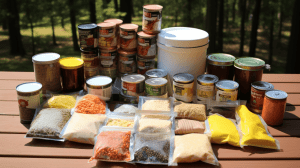
As a part of family survival planning, it’s essential to consider food and nutrition storage. This includes long-term food storage, freeze-dried food, and dehydrated foods.
Long-Term Food Storage
When preparing for long-term food storage, I prioritize staple items like grains, wheat, flour, and rice. These provide a solid base for meals and can last for an extended period when properly stored. Other essential items include honey, sugar, brown sugar, molasses, corn syrup, and salt – all of which serve as preservatives and flavor enhancers.
For optimal food storage, I use dry canning methods, metal cans, and vacuum-sealed bags to protect and prolong the shelf life of my food supply. Maintaining a well-organized inventory allows me to quickly assess my stored items, preventing spoilage and ensuring a balanced diet.
Freeze-Dried Foods
I also invest in freeze-dried food options, as they offer a variety of benefits. These foods are lightweight, require minimal storage space, and maintain their original flavor and nutritional value. They can be stored for up to 25 years and rehydrated with water when needed. Adding freeze-dried fruits, vegetables, and meats to my long-term food storage ensures that I have a balanced and diverse range of nutrients available during emergency situations.
Dehydrated Foods
Lastly, dehydrated foods are another valuable addition to my survival food storage plan. By removing moisture, these items have a longer shelf life and are less susceptible to spoilage. I can easily make dehydrated fruits, vegetables, and meats at home using a food dehydrator, or find a wide selection available for purchase.
Incorporating dehydrated foods into my storage allows me to easily prepare flavorful meals by rehydrating them in water or broth. It also adds variety and texture to my emergency food supply, ensuring that I have access to the essential nutrients my family and I need to stay healthy and resilient in times of crisis.
Water Preparation and Storage
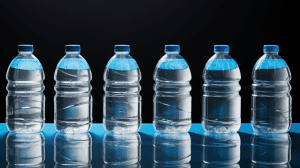
When it comes to family survival planning, I believe that having an adequate supply of water is crucial. In emergency situations, access to clean and safe drinking water might be limited. Therefore, I highly recommend preparing and storing an emergency water supply for my family.
One of the best ways to ensure a reliable source of water during emergencies is to store unopened, commercially bottled water. According to the CDC, this is the safest and most reliable option. I aim to stock at least one gallon of water per person per day for a minimum of three days. This amount should cover both drinking and sanitation needs.
In addition to bottled water, I also prepare by storing water in clean, food-grade containers. This process involves thoroughly washing containers with soap and water, rinsing them well, and sanitizing with a bleach solution. After filling containers, they should be tightly sealed and stored in a cool, dark place.
For long-term storage, I regularly check and replace the stored water every six months or according to the manufacturer’s guidelines. It’s essential to maintain the cleanliness and quality of the water supply to ensure it remains safe for consumption.
In case the water supply becomes contaminated, I’m also prepared with methods for water purification. Boiling is a reliable technique for killing most bacteria, viruses, and parasites. If boiling is not an option, I can use water purification tablets or unscented household bleach to disinfect the water. Following the proper dosage guidelines, I’ll give the water enough time to react with the chemicals before using or consuming it.
By carefully preparing and storing a sufficient water supply, I aim to provide my family with the essential resources needed to survive an emergency situation. With these precautions in place, I am confident that I am well-prepared to address my family’s water needs during challenging times.
Essential Supplies
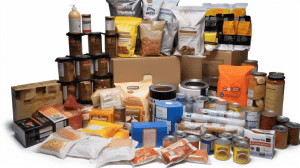
When it comes to family survival planning, having essential supplies is crucial to weather through any emergencies. In this section, I will share some necessary items to have on hand, covering aspects such as food, water, medical equipment, sanitation, and tools.
First and foremost, it’s important that I store a sufficient amount of non-perishable food items, like canned goods and dried foods, which have a long shelf life. Energy bars, as well, would be a great addition to the emergency kit. Ideally, I should aim for at least a two-week supply of food and water per person.
Water is essential, and I would allocate one gallon per person per day, keeping in mind that I need to have enough for both drinking and sanitation purposes. If possible, having a portable water filter or purification tablets could be lifesaving.
For medical equipment, I would ensure to have a well-stocked first-aid kit, containing items like adhesive bandages, gauze, antiseptic wipes, tweezers, scissors, pain relievers, and any necessary prescription medications. Additionally, I shouldn’t forget to regularly check the kit for expired items.
Sanitation is vital in emergency situations to prevent the spread of diseases. I should make sure to have supplies like toilet paper, trash bags, hand sanitizer, soap, feminine hygiene products, and even disposable gloves. Staying clean and hygienic plays a big role in preserving our health in these circumstances.
Lastly, having a set of basic tools can significantly improve my chances of navigating any emergency successfully. Some essentials include a multi-purpose tool with a can opener, a camping stove or portable cooking device, a flashlight with extra batteries, a whistle for signaling, and a battery-powered or hand-crank radio to stay informed on the situation.
By being well-prepared with these essential supplies, I can have peace of mind knowing that my family and I are equipped to handle any emergencies that may come our way.
Skills and Knowledge
When it comes to family survival planning, it’s essential for me to develop a variety of skills and gain knowledge in different areas to ensure the well-being of my loved ones during an emergency or disaster. There are a few key areas that I focus on when preparing for such situations.
First and foremost, I make it a priority to learn and maintain first aid skills. It’s crucial for me to know how to treat common injuries, such as cuts, burns, and fractures, as well as how to recognize and address symptoms of more severe medical situations like heatstroke, hypothermia, or dehydration.
Another essential set of skills I work on is related to camping and outdoor living. I want to be well-versed in setting up a shelter, building a fire, and knowing how to prepare food in an outdoor environment. Additionally, I familiarize myself with navigation using a map and compass, as relying on electronic devices might not be an option during a crisis.
Prepping plays a significant role in my family survival planning. I make sure to have a well-stocked and organized supply of non-perishable food, water, and essential medication that can last for an extended period. I also practice proper food rotation to prevent spoilage and keep my supplies up to date. Furthermore, having a reliable source of light, backup power, and communication methods are vital aspects I consider.
Lastly, I’m always looking to expand my knowledge and skills in areas such as gardening, hunting, and fishing. These activities can provide a sustainable food source if I find myself in a situation where my pre-existing supplies are no longer sufficient.
Preparing my family for emergencies and disasters is a continuous process, and staying informed and enhancing our survival skills is key to our resilience and adaptability in the face of adversity. By focusing on these essential areas, I feel confident that I can provide my family with the tools and knowledge they need to overcome various challenges and protect their well-being during unexpected situations.
Coping with Natural Disasters
In today’s world, natural disasters are not uncommon. It’s crucial to have a well-thought-out family survival plan and to know how to handle various situations. I’ll be discussing two main types of natural disasters and practical advice for facing them.
Surviving Hurricanes and Flooding
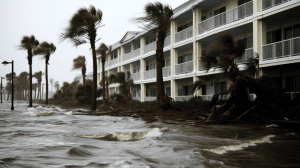
Hurricanes and flooding pose a significant risk to those living in coastal areas and near water bodies. To ensure my family’s safety, I make sure to prepare an evacuation route, emergency supplies, and practice fire drills. Our family disaster plan also includes essential information and instructions to follow during a hurricane or flooding event.
During a hurricane, I stay informed about the latest developments through reliable sources like radio, television, or the internet. I pay close attention to instructions from local authorities, including evacuation orders. When it comes to flooding, I choose high ground to move towards if necessary, and avoid walking or driving through floodwater to reduce the risk of being swept away or encountering hidden obstacles.
Dealing with Tsunamis and Tornadoes
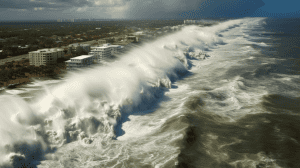
Tsunamis and tornadoes are equally terrifying and can strike with little to no warning. To prepare for such events, I remain vigilant and keep an eye on local weather reports and warnings.
For tsunamis, I make sure to familiarize myself with the potential warning signs on the coast, such as unusually strong wave activity or the water suddenly receding. In case of a warning or detection of a tsunami, I waste no time moving to higher ground. Immediate evacuation is key, and I stay away from the beach or shoreline until it’s safe to return.
When it comes to tornadoes, my family and I follow a few essential safety steps. We have designated a safe room in our home, such as a basement or an interior room, equipped with emergency supplies. I pay attention to weather reports and follow instructions from local officials. In case of a tornado warning, I head to our safe room and make sure all my family members are accounted for.
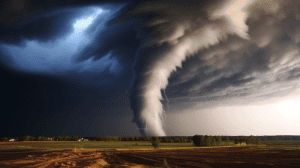
In this unpredictable world, anything from severe hurricanes to a zombie apocalypse can happen. But with a confident and knowledgeable approach, combined with clear communication and a well-thought-out family survival plan, I can face any natural disaster and ensure the safety of my loved ones.
Coping with Other Emergency Scenarios
In addition to natural disasters, it’s essential to be prepared for other emergency scenarios that can occur without warning. I understand the importance of being ready for various situations, so I’ll share some tips to help you and your family cope with different emergencies.
First and foremost, communication is crucial during any emergency. Ensuring that all family members have a way to stay connected in times of crisis can make all the difference. I recommend creating an emergency communication plan to help you find each other and stay informed.
Another essential aspect of emergency preparedness is having a well-stocked disaster supply kit. This kit should contain items like food, water, a flashlight, a first aid kit, and essential medications. The American Red Cross has simple steps to follow to ensure you have everything you need during an emergency.
It’s crucial to be informed about different threats that could affect your area. For example, if you live in a region prone to wildfires or flooding, it’s essential to learn about the necessary evacuations procedures and the safest routes. Pay attention to the local news and weather reports, and always heed warnings and evacuations notices.
Knowing how to respond to specific emergencies is also important for coping with unexpected scenarios. For instance, if a fire breaks out in your home, having a well-rehearsed escape plan can save lives. Make sure every family member is familiar with their escape routes and knows where to gather outside.
In the event a disaster strikes, it’s important to remain calm and focused. Panic can lead to poor decision-making, so it’s crucial to stay as level-headed as possible in emergencies. By setting the example, I can help my family stay safe and secure, ensuring we come out of any crisis prepared and well-equipped to move forward.
With these tips and preparations in place, I’m confident in my ability to help my family navigate through various emergency scenarios. It’s the responsibility of everyone to be prepared, and by following these guidelines, we can all be ready for whatever life throws our way.
Communication in Emergencies
In an emergency situation, staying connected with family members can be crucial. I believe that having a well-prepared communication plan will help my family stay in touch while ensuring their safety.
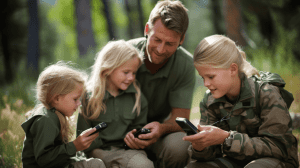
To create an effective emergency communication plan, I can start by asking myself a few “what if?” questions like “What if something happens and I’m not with my family? Will I be able to reach them? How will I know they are safe? How can I let them know I’m OK?” These questions form the basis for deciding on proper communication channels during a disaster. Ready.gov provides guidelines and templates that can assist me in developing a family emergency communication plan.
During an emergency, calling 911 is the ideal course of action for life-threatening situations—however, I also need to consider preserving phone lines for serious emergencies. According to Habitat for Humanity, if I must make a call during a disaster, it is important to keep the conversation brief to avoid congesting the phone lines. Non-emergency communication can be facilitated through text messages, emails, or social media platforms.
A simple, yet vital step in my communication plan is to have a printed hard copy of essential contact information, including my family members, friends, and other important contacts. As few of us have phone numbers memorized, having a physical backup can ensure that I can reach loved ones even if my phone is lost or damaged (Primalsurvivor).
Staying informed during an emergency is essential to make well-informed decisions. Listening to local news broadcasts on a battery-powered radio or through reliable online platforms can provide me with crucial information and updates.
Having a comprehensive pre-emergency communication plan in place will help me confidently manage my family’s safety in any crisis situation and allow me to efficiently send and receive essential news and information.
Post-Emergency Measures
After experiencing an emergency, it’s crucial to stay calm and assess the situation to ensure the safety of my family. One of the first steps I should take is to evaluate our immediate needs. These include securing shelter, attending to any injuries, and ensuring we have suitable provisions.
Our dietary needs must be taken into account when planning our post-emergency food supply. When the emergency is over, I should evaluate the expiration dates of the food and try to replace them as soon as possible. To make this process easier, I’ll prioritize nutritious, non-perishable items that cater to the dietary needs of my family members such as canned vegetables, fruits, proteins, and whole grains. Additionally, I’ll make sure to keep an adequate supply of water, ideally one gallon per person each day for at least three days.
Staying informed and updated after an emergency is essential. I’ll monitor news broadcasts and follow directions from authorities in case there are further instructions or evacuation orders. Keeping track of important information, such as emergency contact numbers and local shelter locations, will help my family and me navigate the aftermath confidently.
Once we have addressed our immediate needs and confirmed that it’s safe to move around, I should begin assessing damages to our home and belongings. Documenting any losses and contacting our insurance company will assist in settling claims efficiently. Furthermore, this is a great opportunity to review and update our family’s emergency preparedness plan based on the experience and any new potential hazards identified.
Maintaining a clear and focused mindset combined with proactive measures and informed decisions will help ensure my family’s recovery and resilience in the wake of an emergency.
Investment in Survival
As someone who is confident and knowledgeable about family survival planning, I believe that investing in survival-related assets is essential. Though the market fluctuations might cause uncertainty in traditional investments like stocks, putting resources into survival gear and skills can provide more assurance and long-term benefits for you and your family.
When it comes to investing in survival, consider focusing on tangible assets such as food storage, water purification systems, and essential survival supplies. A well-stocked pantry, along with planning for any possible emergency will allow you to be prepared for a myriad of scenarios. Allocating funds towards these tangible assets is a wise decision, giving your family a safety net during unforeseen situations.
Expanding your knowledge and skills is another crucial investment for survival planning. Whether it’s learning about first aid, understanding how to preserve food, or acquiring new survival techniques, the time and resources spent on improving these skills will pay off in any situation where you might need to rely on them. A free resource you could use to get started would be a guide on how to build a family survival plan.
Having a well-thought-out plan for how each family member should react during a crisis is also a significant investment in survival. Make sure you have a solid plan in place to ensure that you all end up together in your desired location, and that everyone knows what to do and how to communicate with one another, no matter the situation. For more information on creating such a plan, visit this page.
Lastly, it is essential to keep a balanced approach to investments. While it’s important to prepare for emergency scenarios, also consider the long-term growth of other investments like stocks to maintain a diverse financial portfolio. This way, you can have a safety net for both short-term emergencies and long-term financial security.
Overall, investing in family survival planning encompasses material resources, knowledge, skills, and financial diversity. In the face of potential crises, these investments provide an essential foundation for you and your family, keeping you as safe and secure as possible.
Frequently Asked Questions
What are the essential items for a disaster preparedness kit?
In my experience, the essential items for a disaster preparedness kit include food, water, a first-aid kit, a flashlight with extra batteries, a whistle, a multi-tool, a battery-powered or hand-crank radio, a manual can opener, emergency blankets, and a map of the local area. Additionally, it’s important to have extra vital medication, personal hygiene items, and copies of important documents. Remember, it is crucial to customize your emergency kit based on your family’s specific needs and local risks.
How can we create an effective evacuation plan for our home?
Creating an effective evacuation plan for your home involves identifying multiple exit points from each room, designating a meeting place outside the house, and practicing the plan with your family. It’s also important to have a plan for pets and to make sure all family members know how to use emergency equipment, such as fire extinguishers.
What steps should be taken to prepare for an earthquake?
To prepare for an earthquake, I recommend securing heavy objects and furniture to the walls, creating an emergency kit, and reinforcing the structural integrity of your home. Additionally, it is essential to know how to Drop, Cover, and Hold On during an earthquake. Practice earthquake drills with your family to ensure everyone knows what to do when an earthquake strikes.
What are the key components of a family emergency plan?
The key components of a family emergency plan include communication, evacuation routes, emergency contact information, and locations of emergency kits and supplies. Make sure every family member knows the plan, has access to essential supplies, and knows how to reach designated meeting places. Regularly review and update the plan as needed.
How much food should be stockpiled for a family of five?
For a family of five, I would suggest stockpiling at least a three-day supply of non-perishable food items per person. This should include items like canned goods, dried fruits, and high-calorie snack bars. However, it’s advisable to store more food if space and resources allow. Consider the unique dietary needs of your family and rotate the food stockpile regularly to ensure freshness.
What actions should be taken during a disaster situation?
During a disaster situation, my first priority is ensuring the safety of my family. Stay informed via a battery-powered or hand-crank radio, and follow instructions from local authorities. If you need to evacuate, grab your emergency kit and quickly follow the established evacuation plan. If sheltering in place, secure your home and remain indoors until it’s safe to go outside. Maintain communication with family members and neighbors, and check for updates regularly. Stay calm and focused to make the best possible decisions for the safety and well-being of your family.


